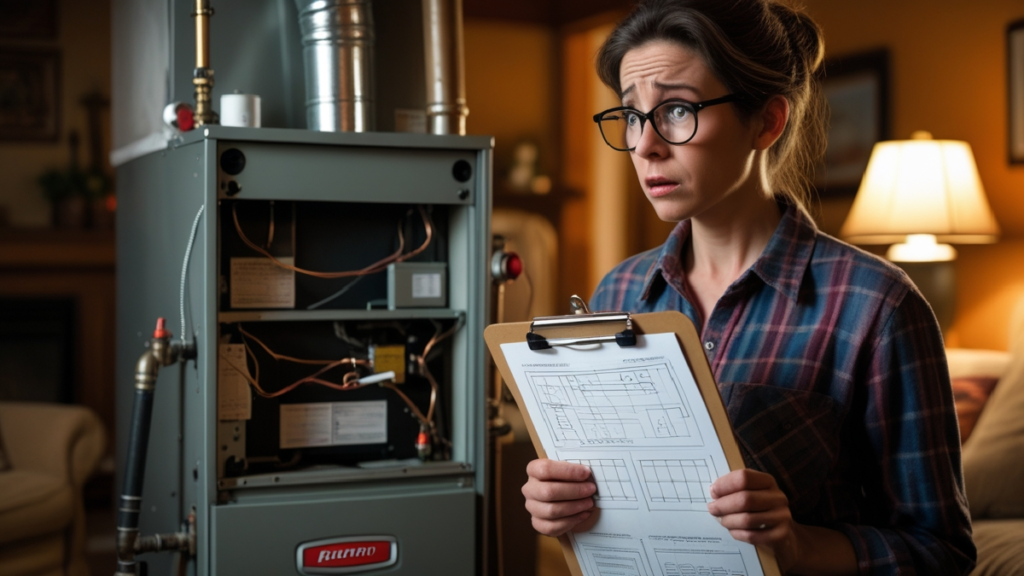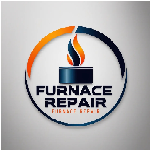Understanding Why the Furnace Will Not Blow Hot Air
When the cold weather hits, a fully functional furnace is vital to keep your home warm and cozy. But it can be alarming and inconvenient when your furnace will not blow hot air, leaving you shivering and uncertain about what’s wrong.

Furnace Will Not Blow Hot Air This problem can stem from a variety of issues, some simple enough for DIY troubleshooting, while others require professional intervention. Recognizing the common causes of this issue is the first step toward restoring your home’s comfort and ensuring your heating system operates safely and efficiently.
This guide aims to walk homeowners through the process of diagnosing why their furnace isn’t producing hot air, offering practical, easy-to-follow troubleshooting steps.
Whether you’re a homeowner with basic DIY skills or someone eager to understand your heating system better, you’ll find valuable insights that help you identify the root cause of the problem and take appropriate action. Remember, safety is paramount—if you ever feel uncomfortable or unsure, don’t hesitate to contact a licensed HVAC professional.
Common Causes of a Furnace Not Blowing Hot Air
Dirty or Clogged Air Filter
Furnace Will Not Blow Hot Air One of the most common reasons a furnace stops blowing hot air is a dirty or clogged air filter. Over time, dust, dirt, pet hair, and other debris accumulate in the filter, restricting airflow through the system.
When airflow is limited, the furnace’s safety features often kick in to prevent overheating, which can cause the system to shut down or operate inefficiently. A clogged filter not only hampers airflow but also forces your furnace to work harder, increasing energy consumption and wear on components.
Thermostat Malfunction or Incorrect Settings
The thermostat acts as the brain of your heating system, signaling when the furnace should turn on and off. If it’s malfunctioning or set incorrectly, your furnace may not activate to produce hot air.
Common issues include dead batteries, calibration errors, or accidental settings that keep the system in “off” mode. Ensuring your thermostat is functioning correctly and set to the desired temperature is essential for proper furnace operation.
Sometimes, your furnace may turn off unexpectedly due to thermostat or airflow issues.
If your furnace keeps shutting off before reaching the set temperature, check our guide on common causes and quick fixes.
Airflow Blockages or Duct Issues
Proper airflow is crucial for efficient heating. Blocked or closed vents, closed dampers, or damaged ductwork can obstruct the flow of warm air into your living spaces.
Furniture blocking vents, closed registers, or broken ducts that leak or collapse can significantly reduce airflow, causing your furnace to produce heat but not distribute it effectively throughout your home.
Gas Supply or Pilot Light Problems
Furnace Will Not Blow Hot Air If your furnace relies on natural gas or propane, issues with the gas supply or a faulty pilot light can prevent it from heating properly.
A pilot light that has gone out or a closed gas valve can stop the burners from igniting, leaving your home cold despite the furnace running. Gas-related issues often require careful handling and professional inspection for safety reasons.
Malfunctioning Blower Motor or Fan
Furnace Will Not Blow Hot Air The blower motor or fan circulates heated air from the furnace into your home. If these components fail or malfunction, warm air may be generated but not blown into your living spaces. Signs include strange noises, the fan not turning on, or the furnace running without blowing any air. A faulty blower motor can be caused by electrical issues, worn-out belts, or motor failure.
Electrical or Control Board Issues
Furnace Will Not Blow Hot Air Electrical problems, such as blown fuses, tripped circuit breakers, or faulty control boards, can disrupt the operation of your furnace. These issues may prevent the system from activating the blower or igniting the burners, resulting in no hot air being produced.
Electrical components are critical to the safe and efficient operation of your furnace, and problems here should be handled by a professional.
Step-by-Step Troubleshooting for Furnace Not Blowing Hot Air
Step 1: Check and Replace the Air Filter
Furnace Will Not Blow Hot Air The first step in troubleshooting is inspecting the air filter. Turn off your furnace to avoid any injury or damage, then locate the filter—usually found in the return air duct or within the furnace blower compartment. Remove the filter and examine it closely.
If it appears dirty, discolored, or clogged with debris, replace it with a new filter rated for your system. Regularly changing filters every 1 to 3 months is a simple yet effective way to maintain proper airflow and prevent future issues.
Step 2: Verify Thermostat Settings and Functionality
Furnace Will Not Blow Hot Air Next, check your thermostat. Make sure it’s set to “heat” mode and that the temperature setting is higher than the current room temperature. If your thermostat uses batteries, replace them with fresh ones.
Furnace Will Not Blow Hot Air If it’s a digital or programmable thermostat, consider resetting it or recalibrating to ensure it’s communicating correctly with your furnace. Sometimes, simply adjusting the thermostat can resolve the issue if it was set incorrectly or malfunctioning.
Step 3: Inspect Vents and Ductwork for Blockages
Furnace Will Not Blow Hot Air Walk through your home and examine all vents and registers. Ensure they are open and unobstructed by furniture, curtains, or other objects. If you find closed vents, open them and clear any blockages.
For ductwork, look for visible damage, disconnected sections, or areas where insulation might be missing. Sealing leaks and ensuring unobstructed airflow significantly improves heating efficiency and comfort.
Step 4: Confirm Gas Supply and Pilot Light Status
Furnace Will Not Blow Hot Air If your furnace uses gas, check that the gas valve is open and the pilot light is lit. If the pilot light has gone out, follow the manufacturer’s instructions to relight it safely.
If you’re uncomfortable handling gas components, it’s best to contact a professional technician. Gas leaks or improper pilot light operation can be dangerous and require expert attention.
Step 5: Inspect the Blower Motor and Fan
Furnace Will Not Blow Hot Air Listen for sounds of the blower motor running when the furnace is on. If you hear strange noises or the fan isn’t spinning, turn off the system and inspect the blower assembly.
Look for visible damage, broken belts, or burnt-out motors. If you’re unsure or notice damage, call an HVAC technician to repair or replace faulty components. Proper functioning of the blower motor is essential for distributing warm air efficiently.
Step 6: Check Electrical Components and Reset Circuit Breakers
Furnace Will Not Blow Hot Air Finally, go to your home’s electrical panel and look for any tripped circuit breakers related to your furnace. Reset any breakers that have tripped, and ensure all fuses are intact.
If electrical issues persist or you notice frequent breaker trips, it’s wise to have a professional diagnose wiring problems or control board malfunctions. Electrical safety is critical, and handling these components without proper training can be hazardous.
When to Call a Professional HVAC Technician
Furnace Will Not Blow Hot Air While basic troubleshooting can resolve many common issues, some problems require the expertise of a professional HVAC technician. If you’ve checked the air filter, thermostat, ductwork, and electrical components, yet the furnace still will not blow hot air, it’s time to seek professional help.
Technicians have specialized tools and knowledge to diagnose complex problems such as faulty control boards, gas leaks, or blower motor failures safely and efficiently.
Attempting repairs on gas lines or electrical systems without proper training can be dangerous. Regular maintenance, including annual tune-ups and inspections, can prevent many issues before they cause discomfort or costly repairs. If you’re unsure or uncomfortable with any troubleshooting step, don’t hesitate to contact a licensed HVAC professional for assistance.
Maintaining Your Furnace for Reliable Heating
Furnace Will Not Blow Hot Air Prevention is always better than repair. Regular maintenance, such as changing filters, inspecting ductwork, and scheduling annual professional tune-ups, can help prevent most issues that cause the furnace to stop blowing hot air.
Keep an eye on your system’s performance and address minor problems promptly to avoid discomfort and higher repair costs. A well-maintained furnace not only provides reliable warmth but also operates more efficiently, saving you money on energy bills.
Remember, if you’re ever unsure about any troubleshooting steps or maintenance procedures, professional assistance is just a call away. Proper care and timely repairs will ensure your heating system keeps your home warm and safe throughout the cold season.
Conclusion: Restoring Comfort and Safety in Your Home
Furnace Will Not Blow Hot Air Dealing with a furnace that will not blow hot air can be an unsettling experience, especially during winter. However, many common causes are simple to diagnose and fix with basic troubleshooting steps. By checking the air filter, thermostat, ductwork, and electrical components, you can often restore warmth to your home quickly and safely.
Remember, safety should always come first—if you encounter complex issues or feel uncomfortable performing any repair, contact a licensed HVAC technician promptly.
Regular maintenance and timely repairs help ensure your furnace operates efficiently and reliably, providing you peace of mind and consistent comfort during the cold months. Don’t hesitate to reach out to professionals when needed, and keep your heating system in top shape for many winters to come.
Furnace Will Not Blow Hot Air Want more home heating tips and maintenance updates?
Follow us on Facebook for regular advice and quick furnace repair videos.


Leave a Reply